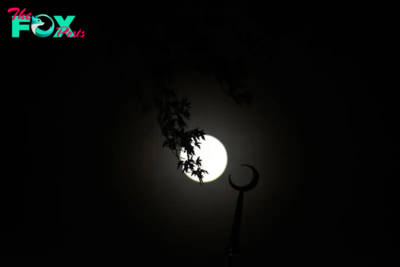Science
James Webb telescope watches ancient supernova replay 3 times — and confirms something is seriously wrong in our understanding of the universe
The James Webb Space Telescope (JWST) has discovered yet another troubling sign that there's something very wrong with our model of the universe.
Depending on which part of the universe astronomers measure, the cosmos seems to be growing at different rates — a problem scientists call the Hubble tension. Measurements taken from the distant, early universe show that the expansion rate, called the Hubble constant, closely matches our best current model of the universe, while those taken nearer to Earth threaten to break it.
Now, a new study using the gravitationally-warped light of a 10.2 billion light-year distant supernova has revealed that the mystery could be here to stay. The researchers released their findings in a series of papers in The Astrophysical Journal. The Hubble tension calculations have also been accepted for publication in the journal, and are posted in a paper on the pre-print database arXiv.
"Our team's results are impactful: The Hubble constant value matches other measurements in the local universe, and is somewhat in tension with values obtained when the universe was young," co-author Brenda Frye, an associate professor of astronomy at the University of Arizona said in a statement.
Related: 'It could be profound': How astronomer Wendy Freedman is trying to fix the universe
Currently, there are two gold-standard methods for figuring out the Hubble constant. The first involves poring over tiny fluctuations in the cosmic microwave background, an ancient relic of the universe's first light produced just 380,000 years after the Big Bang. This method enabled astronomers to infer an expansion rate of roughly 67 kilometers per second per megaparsec (km/s/Mpc), which closely matches predictions made by the standard model of cosmology.

But the second method, measuring closer distances with pulsating stars called Cepheid variables, contradicts this — returning a puzzlingly high value of 73.2 km/s/Mpc. This discrepancy superficially may not seem like much, but it's enough to completely contradict the predictions made by the standard model. According to the model, a mysterious entity known as dark energy is supposed to be driving the universe’s expansion at a constant rate, but the new findings throw a wrench in this understanding.
-

 Science14m ago
Science14m agoHow to See the ‘Beaver’ Supermoon—the last of 2024
-

 Science4d ago
Science4d agoInside Capitol Hill’s Latest UFO Hearings
-

 Science4d ago
Science4d agoYou Won’t Want to Miss the Leonid Meteor Shower. Here’s How and When You Can See It
-

 Science5d ago
Science5d agoHere’s What Trump’s Win Means for NASA
-

 Science1w ago
Science1w agoWhy Risky Wildfire Zones Have Been Increasing Around the World
-

 Science1w ago
Science1w agoIt’s Time to Redefine What a Megafire Is in the Climate Change Era
-

 Science1w ago
Science1w ago4 Astronauts Return to Earth After Being Delayed by Boeing’s Capsule Trouble and Hurricane Milton
-

 Science1w ago
Science1w agoThe Elegance and Awkwardness of NASA’s New Moon Suit, Designed by Axiom and Prada



























